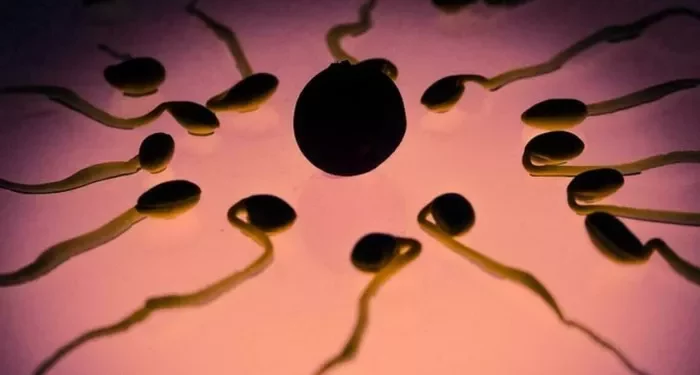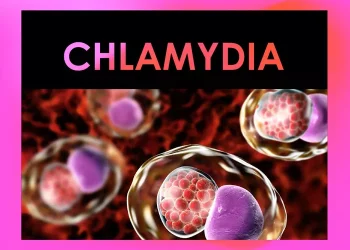Asthenospermia, also known as asthenozoospermia, is a condition characterized by reduced sperm motility. This means that the sperm have difficulty swimming effectively, which can significantly impact a man’s fertility. Sperm motility is crucial for natural conception as it allows sperm to travel through the female reproductive tract to reach and fertilize the egg.
There are two types of asthenozoospermia: primary and secondary. Primary asthenozoospermia is typically related to intrinsic defects in the sperm‘s structure or function, often due to genetic factors. Secondary asthenozoospermia, on the other hand, results from external factors such as lifestyle, environmental influences, or underlying medical conditions. Understanding the various causes of asthenospermia is essential for diagnosing and treating this condition effectively.
Medical Conditions
Varicocele
Varicocele is a common medical condition that can adversely affect sperm motility. It involves the enlargement of veins within the scrotum, similar to varicose veins that occur in the legs. Varicocele can increase the temperature within the testicles, which is detrimental to sperm production and function. Elevated scrotal temperature can impair the development and motility of sperm, making it more challenging for them to fertilize an egg. The condition is present in approximately 15% of the male population and in up to 40% of men with infertility issues.
Hormonal Imbalances
Hormonal imbalances, particularly involving testosterone, can significantly impact sperm production and motility. Testosterone is crucial for the development of male reproductive tissues and the production of sperm. Other hormones, such as follicle-stimulating hormone (FSH) and luteinizing hormone (LH), also play vital roles in regulating spermatogenesis. Imbalances in these hormones can lead to reduced sperm count and poor motility. Conditions such as hypogonadism, hyperprolactinemia, and thyroid disorders can all disrupt hormonal balance and adversely affect sperm quality.
See also: Ayurvedic Approach to Azoospermia
Infections
Genital tract infections and inflammation are known to harm sperm motility. Infections such as epididymitis, prostatitis, and sexually transmitted infections (STIs) can cause inflammation and damage to the reproductive organs. This inflammation can lead to the production of reactive oxygen species (ROS), which can damage sperm cells and impair their motility. Additionally, infections can cause scarring and blockages in the reproductive tract, further hindering the transport and function of sperm.
Genetic Factors
Genetic factors play a crucial role in some cases of asthenospermia. Chromosomal abnormalities, such as Klinefelter syndrome (47,XXY) and other structural chromosomal anomalies, can affect sperm production and function. Additionally, mutations in specific genes involved in spermatogenesis can lead to defects in sperm motility. Cystic fibrosis is another genetic condition that can impact fertility. Men with cystic fibrosis often have congenital bilateral absence of the vas deferens (CBAVD), which affects sperm transport and can result in low sperm motility.
Undescended Testicles
Undescended testicles, or cryptorchidism, is a condition where one or both testicles fail to descend into the scrotum before birth. This condition can negatively affect sperm development due to the higher temperatures within the abdomen compared to the scrotum. Proper testicular descent is crucial for normal spermatogenesis, and failure to correct undescended testicles early in life can lead to permanent impairment of sperm production and motility.
Lifestyle and Environmental Factors
Diet and Nutrition
Diet and nutrition play a vital role in maintaining sperm health and motility. Essential nutrients, such as zinc, selenium, folic acid, and vitamins C and E, are critical for optimal sperm function. Deficiencies in these nutrients can lead to oxidative stress, which can damage sperm cells and impair their motility. A diet rich in antioxidants and essential vitamins and minerals can help protect sperm from oxidative damage and improve motility.
Tobacco and Drugs
The use of tobacco and recreational drugs has a significant negative impact on sperm function. Smoking cigarettes introduces numerous toxins and chemicals into the body that can harm sperm DNA and reduce motility. Similarly, the use of recreational drugs such as marijuana, cocaine, and anabolic steroids can disrupt hormonal balance, reduce sperm production, and impair motility. Quitting smoking and avoiding recreational drugs are essential steps in improving sperm health and motility.
Toxins and Chemicals
Exposure to environmental toxins and chemicals is a growing concern for male fertility. Pesticides, herbicides, heavy metals, and industrial chemicals can all negatively impact sperm quality. These substances can induce oxidative stress and damage the DNA and structure of sperm cells, leading to reduced motility. Men who work in industries with high exposure to these toxins should take preventive measures, such as using protective equipment and reducing direct contact with harmful substances.
Stress
Chronic stress can adversely affect sperm health by disrupting hormonal balance and inducing oxidative stress. Stress can lead to elevated levels of cortisol, which can interfere with testosterone production and spermatogenesis. Additionally, stress can result in unhealthy lifestyle choices, such as poor diet, lack of exercise, and substance abuse, further exacerbating the problem. Managing stress through relaxation techniques, exercise, and mental health support is crucial for maintaining optimal sperm motility.
Overheating
Frequent exposure to high temperatures can harm sperm motility. Activities that raise scrotal temperature, such as using hot tubs, saunas, or wearing tight clothing, can impair sperm production and function. The testicles are located outside the body to maintain a temperature slightly lower than the core body temperature, which is necessary for optimal sperm development. Prolonged exposure to elevated temperatures can disrupt this delicate balance and reduce sperm motility. Men should avoid prolonged exposure to heat and opt for loose-fitting clothing to help maintain an optimal scrotal temperature.
See also: Azoospermia You Need to Know
Conclusion
Asthenospermia, characterized by poor sperm motility, can result from a variety of causes, including medical conditions, genetic factors, and lifestyle and environmental influences. Understanding these causes is essential for diagnosing and treating this condition effectively. Medical conditions such as varicocele, hormonal imbalances, infections, genetic factors, and undescended testicles can all impair sperm motility. Additionally, lifestyle and environmental factors, including diet and nutrition, tobacco and drug use, exposure to toxins, stress, and overheating, play significant roles in sperm health.
Consulting a urologist or fertility specialist is crucial for proper diagnosis and treatment of asthenospermia. These professionals can perform comprehensive evaluations to identify the underlying causes and recommend appropriate interventions. Treatment options may include medical therapy, lifestyle modifications, or assisted reproductive technologies, depending on the severity and cause of the condition.
Disclaimer
This article provides general information about asthenospermia and its causes. It is not a substitute for professional medical advice, diagnosis, or treatment. Readers should consult a healthcare provider for personalized diagnosis and treatment plans tailored to their specific needs and conditions.
Related Topics:
Varicocele and Azoospermia: Impact on Fertility



























